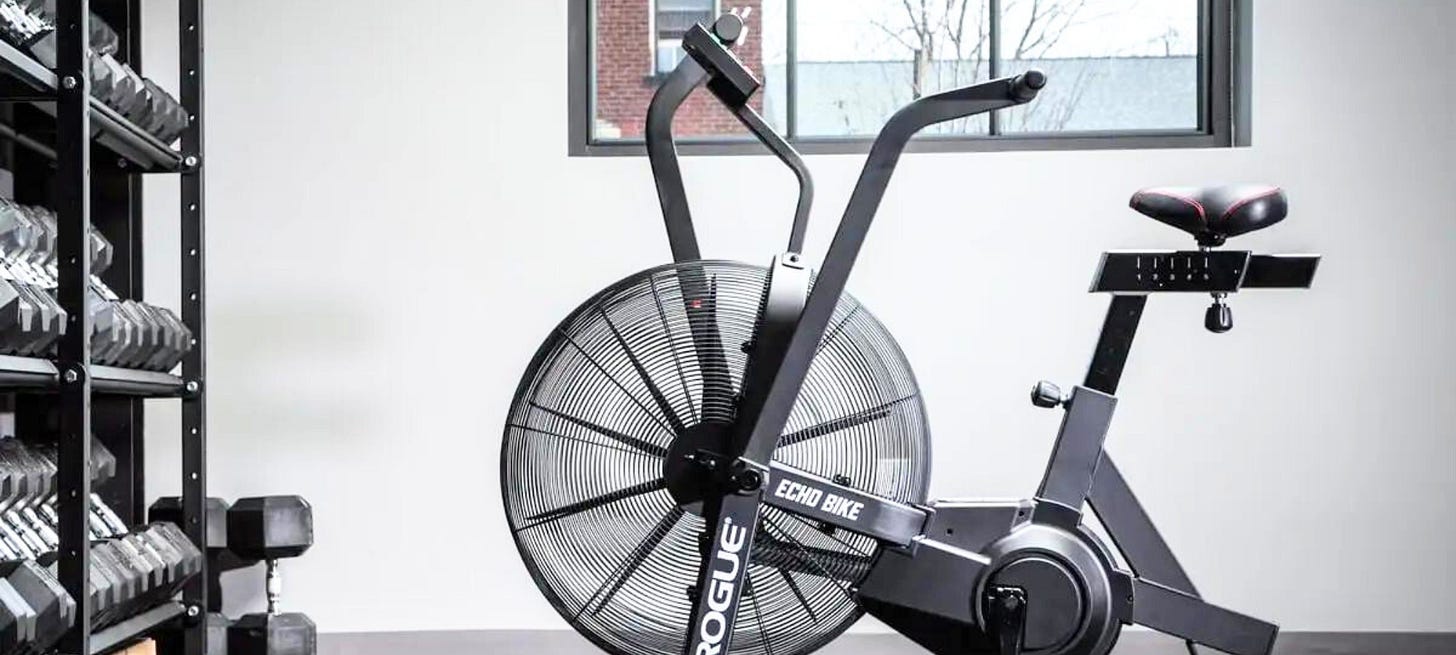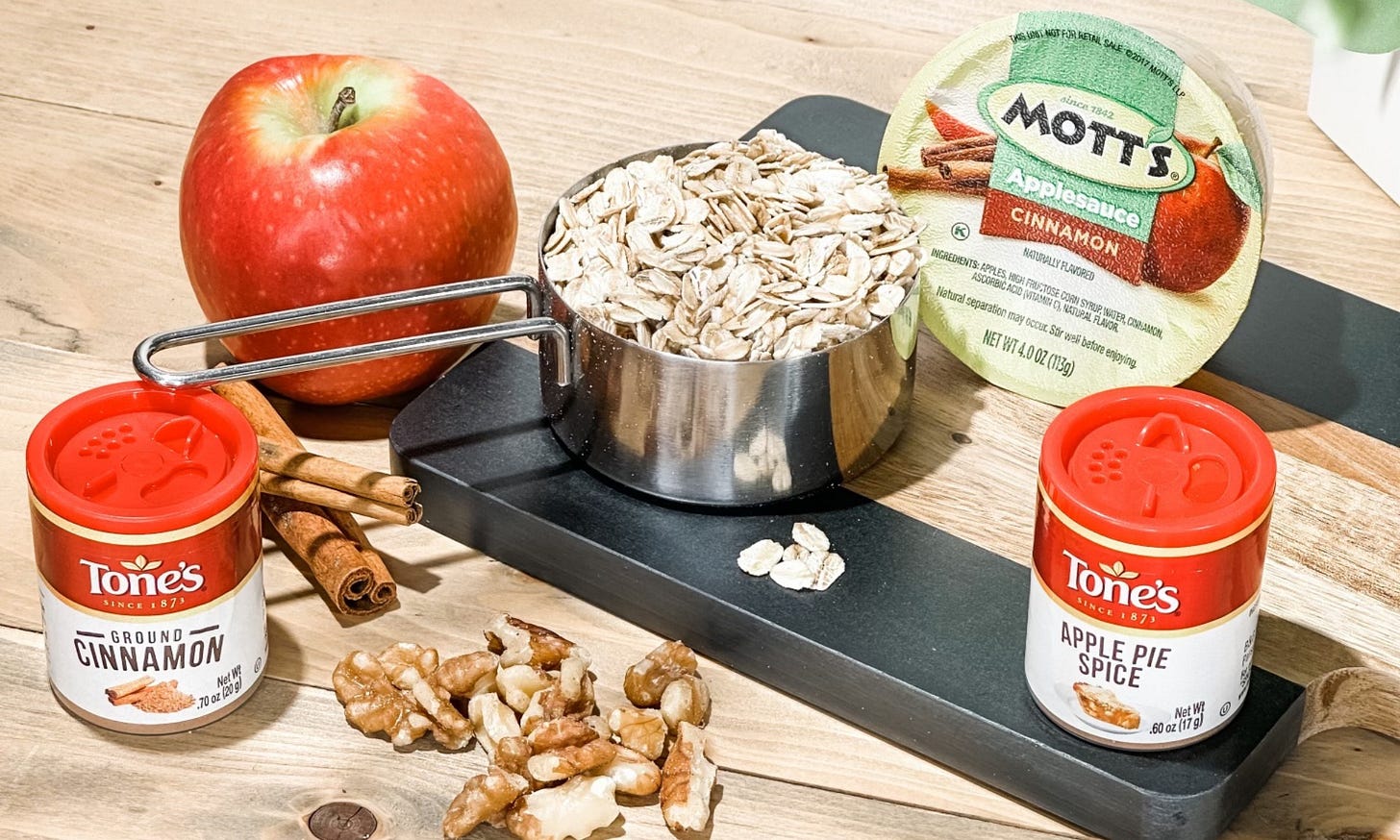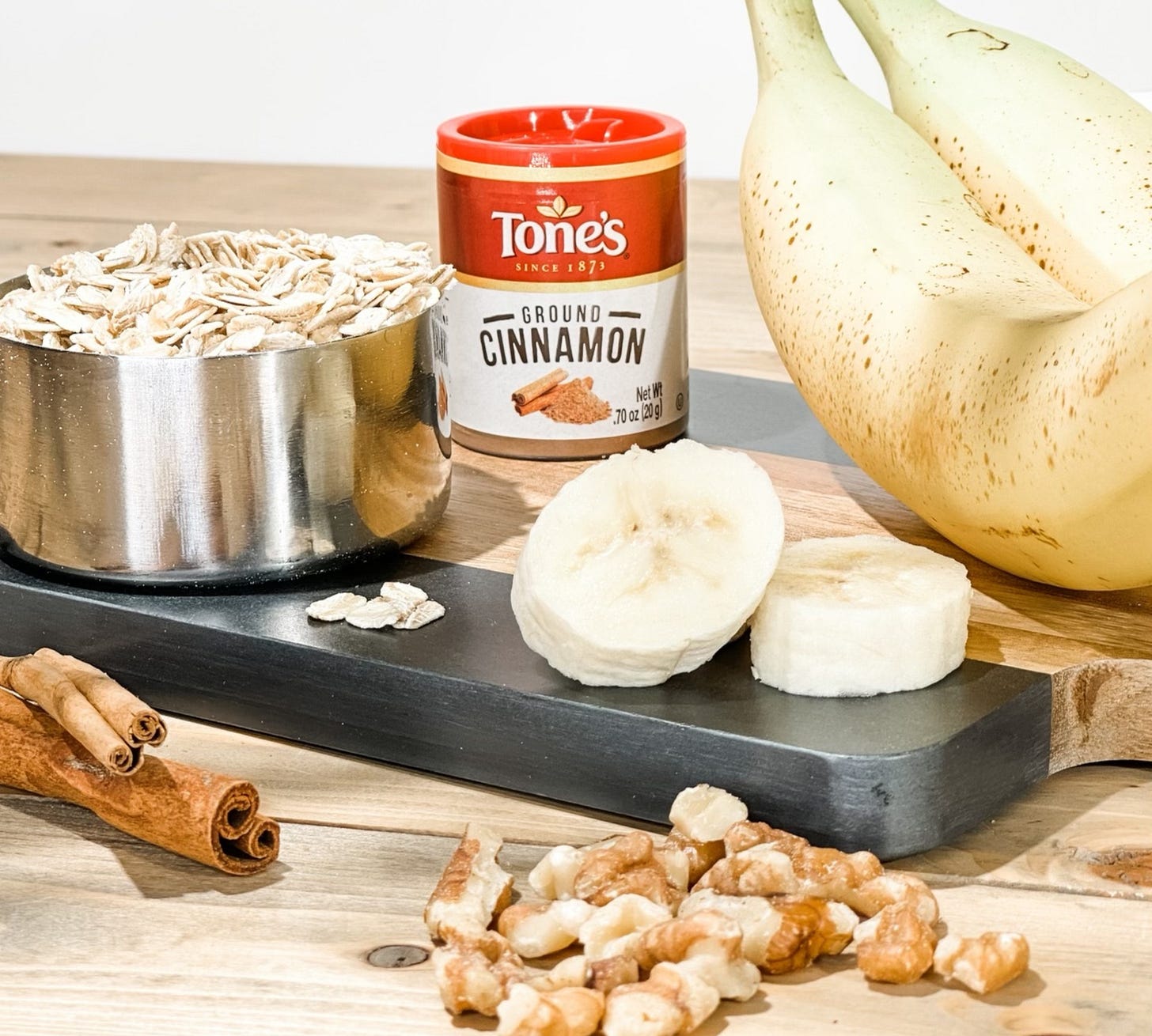Off Day Training Activities For The Gym Junky
If being at the gym makes you happy, go every day. Here's how to do it smart.
The Anchor
An anchor is a device, normally made of metal, used to secure a vessel to the bed of a body of water to prevent the craft from drifting due to wind or current. That’s the fancy definition.
To me, an anchor is anything that keeps something in place or within reach. That something doesn’t need to be a boat. It doesn’t need to be a buoy. It doesn’t even need to be a material object. That something can be a thought, a goal, or my personal favorite, a mindset.
The anchor doesn’t need to be a heavy piece of steel like we typically envision when we hear the word. The anchor can be a person or an activity. Have you ever strayed from a goal or lost your driven mindset, only to have a good friend or a passionate coach pull you back and keep those things within reach?
In my above definition, your goal or driven mindset was the ‘something’ being kept within reach and that friend or coach keeping it you near it was the ‘anything,’ or the anchor.
Successful people have anchors in their lives, which keep their goals within reach and their winning mindsets from wandering. Dwayne Johnson will tell you his anchor is waking up at 4 o’clock in the morning and training twice before he does anything else. I can tell you, for a fact, that this rejuvenates his inner warrior spirit and boosts his competitive mindset to start each day.
David Goggins has spoken about his anchor being very simple. His anchor is tying his running shoes. He knows once his shoes are tied, it’s time for him to go to work, run miles and miles, and maintain his reputation as the hardest working man on the planet. The act of tying his shoes has become the first part of his daily ceremony, his processional. There are days where it takes him 20 minutes to tie his shoes because he doesn’t want to endure what comes next. But still, he does it. It’s his anchor and it keeps him accountable.
My Anchor
My anchors are my daily 11am workout and the meal before it. Every day, at 9am, you’ll find me preparing my second meal of the day; my pre-workout waffle. Before grabbing any ingredients, I plug in my waffle maker and let it preheat. I mix a half cup of dry oats with a half cup of waffle mix, add water, and stir. Once I like the look of the batter, onto the waffle maker it goes, and while it’s cooking, I grab a pre-grilled chicken pec and that beautiful bottle of Buffalo Wild Wings BBQ sauce.
By the time I’ve plated my protein, I can hear the audible click of my waffle maker’s blue ‘ready’ light turning on and I know it’s time to eat. I keep it real simple, adding nothing to the waffle and pouring a glass of water on the side. Trust me, the waffle tastes excellent on it’s own and the texture given by the old fashioned oats just feels wholesome.
Oats have never let me down as a pre-workout carb source. As a bonus, at the end of this article, I’ve included two quick and easy oat recipes you can use to fuel your own training days. Can you say apple crisp and banana bread? Do your best to not skip ahead!
This 9am anchor meal serves up plenty of pre-workout carbs, fiber, complete protein, and hydration. Everything about it tastes awesome and it doesn’t weigh me down during training. When I make this meal, I know I’m training two hours later and this pushes me to work hard at my business before that times comes. I’m on the clock, which is set into motion by my pre-workout meal and time is up at 11am.
The meal is a great anchor, but I see my daily training as the big daddy anchor. You know how I said Dwayne Johnson fuels his warrior spirit with his 4am anchor training and it gives him drive to conquer each day? This is such a common effect of training hard, training with purpose, and training with a plan and it’s why so many people will say that training is their anchor.
For me, training delivers the drive to work hard in other aspects throughout the remainder of my day and the natural high I get from the combination of music, moving weight, thinking positive, seeing progress, and endorphins is when I feel most alive and invincible!
This is exactly why the gym is my anchor, and if you feel the same, we’re built the same. We’re gym junkies. We need it!
What’s your anchor? I told you mine, now you tell me yours.
I realize it took me awhile to explain my anchor and I even contemplated leaving this section out or turning into an article of it’s own. I thought about it, but ultimately decided to share it with you because I want you to understand what makes me tick.
My hope is that my thoughts and processes resonate with you and you feel more in tune with this article, and future articles, because of it.
Off Day Training Activities
The phrase ‘off day training’ is an oxymoron. If it’s off day, doesn’t that mean there’s no training being done? Technically, yes. But rules are meant to be broken and the ones breaking them are usually leading the pack. Going forward, the term ‘off day’ refers to a day that doesn’t involve one of your program’s main weight training days.
As an example, if I’m running a four day weight training program and each microcycle spans one week, then I have three off days per week. Those three off days free up time for me to stay home and skip the gym, or, I could continue going to the gym because it makes me feel great while I’m there and I’m a better husband, father, trainer, and because of it.
If something delivers such high-caliber benefits and I have the time to do it, I’m doing it.
At the same time, I can’t just march in and do one of my main weight days whenever I feel like it. My training split includes off days for good reason and if I didn’t pull back multiple days per week, I’d end up an injured and overtrained mess. Ain’t nobody got time for that!
Instead of working at main day intensity levels, we must respect the off day label and train smart. In my experience, two specific activities satisfy off day training criteria very well.
Performing some type of cardio-focused activity with moderate intensity. Higher intensity work, such as interval training, may be used in certain cases.
Training 1 to 3 weak point muscle groups. Adding total training volume to weak points will improve them over time.
Both of these objectives provide important benefits, such as:
Keeping the anchor activity in place. In this case, the anchor is going to the gym.
Working towards physical improvement, whether it’s improving cardiovascular health through cardio or building up physically weak muscle groups through added attention and training frequency.
Providing satisfaction, positivity, life balance, and self-pride in knowing you are consistently prioritizing self-care.
All of the things you’re able to accomplish during your non-gym hours as a result of feeling better inside and out.
Now that I’ve established my two recommended areas of off day training focus and shown you a handful of mega-important benefits, I’m going to talk about each objective. These outlines will give you direction and guidance, so when you hit the gym during your next off day, you’ll know what to do.
The Cardio
Cardio can be broken down into three types:
Low Intensity
Moderate Intensity
High Intensity
When it comes to the goal of just getting into the gym each day to feel your best, without training for a specific event like a marathon, mountain trek, or spartan race, my recommendation is to stick to moderate intensity cardio.
Moderate intensity cardio will give you many of the sensations of high intensity work, just dialed down. There will be times when you’re breathing heavier, feeling a burn in your working muscles, telling yourself to keep going, and watching the clock to make sure it’s still moving.
You’ll experience the high of natural endorphins, as well as personal satisfaction, as you work through and finish up a moderate cardio session.
Am I Doing It Right?
To ensure you’re working at the appropriate intensity level, look for these indicators:
A heart rate between 65-75% of your max heart rate. Max heart rate is generally determined by subtracting your age from 220.
A steady/mild burn in your primary working muscle groups.
The need to focus on a breathing rhythm.
How Do I Do It?
There are many methods you can use to perform moderate intensity cardio. From maintaining a stepped-up elliptical pace, steadily pushing on an AirDyne or Echo bike, or moving briskly on a rowing machine, so many options exist.
Whichever method you choose, aim to work both your upper and lower body muscles, as this consistently delivers the best all-around experience.
How Long Should I Do It For?
The duration of your off day cardio is going to be individualized, no question. In my own training, I’m personally a huge fan of alternating between bouts of cardio and sets of weak point exercises. When all is said and done, at the time I’m writing this, my current off day workload falls between 30 and 45 minutes of cardio, and three sets of three exercises.
My favorite schedule involves me choosing three different exercises that focus on my weak points. My current weak points are forearms, neck, and calves, so I’ll complete my first cardio bout, hop off the machine, and run through one forearms set, one neck set, and one calves set. Those three sets usually take about five minutes and then I’m back to cardio to repeat the process.
So, how long should you spend on off day cardio? In this case, there really is no perfect answer. I really feel that 30 minutes is not too much to ask, and should be the minimum, especially if it’s broken up to minimize the boredom factor that commonly comes with steady state cardio.
As a general rule of thumb, if you feel great that day and want to prioritize cardio, push past 30 minutes and head to 40-45. If you feel like focusing more on your weak point exercises, hit the minimum 30 minutes and put more work into the weights. How you approach your cardio time is adjustable on the fly.
With off day cardio, keep it simple and just focus on getting it in. Don’t overthink it.
As you read earlier, this section inadvertently brought up my second recommended off day training activity; weak point training. Let’s chop it up.
The Weak Point Training
As mentioned above, I’m a big fan of training a small number of weak points, with three at a time being the absolute upper limit. And honestly, if you’re focusing on large muscle groups like chest, back, or any upper leg muscles, I would recommend the upper limit be two.
I talked about my current weak point areas of focus and I mentioned three, but note the relative size of the areas I’m working. Forearms, calves, and neck muscles are comparably small when stacked against other muscle groups. This is why I’m hitting three areas right now, but this is not always the case.
When choosing your own weak point muscle groups to work during off day training, consider the concept above!
How Should I Train Them?
So you’ve chosen your weak points and can’t wait to add volume to them, and hopefully, remove their weak point status through time, effort, and subsequent muscle growth. Should you train them hard and heavy with near-maximal weights and low rep counts? How about visiting Pump City with high rep sets? As you can see, options exist and having a plan of action is important.
Since these exercises are only going to be done during off days, and prioritizing recovery from main training days is key, I do not want you blasting your weak point muscle groups with near-maximal weights and low rep counts.
That type of punishment demands big recovery towards it’s targeted muscle groups and, in the words of Mr. Olympia Lee Haney, we’re looking to ‘stimulate, not annihilate’ in this situation.
If we keep the degree of recovery demand lower for our weak point muscle groups, we won’t rob the rest of our body of proper recovery as a whole. This is important, and can be accomplished by keeping our weak point training rep counts in the upper-medium/high rep range. Think 12-20 reps. As for set counts, stick to 2-3 sets.
If we stick to this higher rep range for 2-3 sets, we’ll keep the stress on joints lower, add plenty of volume to our targeted weak point muscle groups, feel the satisfying sensations associated with muscle burn and pumps, be easily able to maintain and practice great form, and finish with a sensation of doing plenty of work, but not feeling destroyed from it. It just feels good, trust me.
In summary, by following this 12-20 reps x 2-3 sets approach, we’ll be giving our weak point muscle groups stimulus to grow without a recovery-demanding beat down. It’s an undoubtedly smart approach, which syncs well with our main training day energy and recovery demands, for killer results.
How Often Should I Train My Weak Points?
For years and years, I’ve recommended training weak points at a 2-3 times weekly frequency. If we stick to the example we’ve used throughout this article, we have three off days per week. This gives us a maximum of three opportunities to perform our weak point exercises as an off day activity. Does this mean you absolutely have to train them three times per week? No way Jose.
My recommended frequency is 2-3 times per week, so feel free to fall within that range. Build your off day training activities as you wish.
Perhaps you want to have two days per week involving both cardio and weak point exercises and one day per week devoted purely to cardio. Or, maybe you feel like flip’n that script and running two cardio/weak point exercise days and one day purely aimed at exercises.
Just like cardio duration, options exist because there isn’t a magic formula to follow when approaching your off day activities.
However, having a plan of action is mandatory, so make sure you have one before you get into the gym each day.
Which Type of Weak Point Exercises Should I Choose?
The next aspect of weak point training I’d like to discuss revolves around exercise selection. As you may, or may not know, exercises can be broken down into compound and isolation categories. For the sake of simplicity, think of them this way:
Compound Exercises - Exercises targeting more than one muscle group.
Isolation Exercises - Exercises targeting one muscle group.
Examples are helpful, so here’s a couple to illustrate these different exercise types:
Compound Exercise Examples - Squats, Bench Presses, Lat Pulldowns
Isolation Exercise Examples - Barbell Curls, Leg Extensions, Shoulder Flyes
From earlier, do you remember the importance of keeping our need for recovery decreased as a result of our weak point training work?
If we focus purely on our weak point targets, without dragging non-weak point muscle groups into the equation, this helps us achieve lower recovery demand across the body as a whole. We can do this by prioritizing isolation exercises.
My official recommendation for weak point training exercise selection is to choose isolation exercises whenever possible.
Want to focus on quads? Keep Leg Extension variations and Sissy Squats in your plans. Need to bring up your triceps? Pick Tricep Pressdown and Skullcrusher variations, leaving Dips and Close Grip Bench Presses out of the picture. Prioritize the isolations, which is perfectly OK, as you have plenty of room for compounds during your main training days.
How Many Exercises Should I Do Per Weak Point?
This last question is a common one, and once I’ve answered it, you should be armed with the pieces of knowledge you need to put weak point exercises to use during your off days.
Off day training is about staying in the gym because you love being there. It’s about having fun, staying mentally engaged in your training, feeling great inside and out, and setting yourself up for success in all aspects of life.
For this reason, I strongly recommend making sure you’re not repeating exercises within a one-week timeframe.
Here’s an example; if you choose Barbell Curls for your first weak point biceps session of the week (let’s say it’s Monday), choose a different curl variation for your next off day of that same week (let’s say it’s Thursday). As a suggestion, choose Cable Curls with a Rope Attachment instead. Then, when the next Monday rolls around, use Barbell Curls again and restart the cycle, hitting those Cable Curls during Thursday’s training day.
Overall, the number of exercises you need depends on how often you’re training that weak point each week.
If you’re training it twice-weekly, make sure you have two choices lined up to avoid intra-week exercise repetition. If you’re going for thrice-weekly activation, three exercises is the way. And ya, I said thrice. It’s a real word.
Closing Time
As the old Chappelle’s Show skit says, ‘Wrap it up!’ By taking in the information I presented in this article, you should have new ideas for satisfying your off day training cravings without taking away from your main day training progress.
You can get to the gym, feel all the positive sensations you get from doing physical work, improve your mental and physical health, and work on lacking areas you’d like to see catch up to your current strengths. Smart off day training activities can bring you all of those things, I promise.
Have fun and don’t let anyone tell you you’re doing too much. You have a smart and effective plan in place, which makes all the difference.
Alright, it’s time for me to cut the training talk and deliver what I promised earlier. Have a great rest of your day and before I hit you with these tasty oatmeal recipes, I have a joke for you.
Why couldn’t the fisherman go to the gym? He pulled a mussel. It’s funny, right?
Pre-Workout Oatmeal Recipes
Oats have never failed to supply me with endless training day energy. I’m sharing these two recipes with you because they are quick and easy to make, taste phenomenal, and contain micro and macronutrient-dense ingredients.
I’m going to list the ingredient amounts that I use for each recipe, but feel free to adjust them according to your own calorie/macro needs.
Apple Crisp Oats
When I say this tastes like apple crisp, I mean it.
Mix the following ingredients in a bowl and enjoy. Serve hot or cold, it’s phenomenal either way.
1/2 Cup Old Fashioned Oats
1/2 Cup Applesauce
1/2 Medium-sized Apple, chopped
1/8 Cup Walnuts
Cinnamon
Apple Pie Spice
Add water if necessary, depending on your preferred consistency.
Banana Bread Oats
I don’t know about you, but I’m not interested in spending hours baking a loaf of banana bread when I can make this in just a few minutes. Try it, taste it, and leave the real banana bread for those special visit’s to Grandma’s house.
Mix the following ingredients in a bowl and enjoy. Serve hot or cold, it doesn’t matter because it tastes so good.
1/2 Cup Old Fashioned Oats
1 Banana
1/8 Cup Walnuts
Cinnamon
Add water if necessary, depending on your preferred consistency.
Enjoy these two recipes and fuel your workouts properly at the same time. If you give them a taste, please leave a comment and tell me what you think.












Holy buckets this is a crazy good article. Thank you for all the valuable ideas and recipes to try!